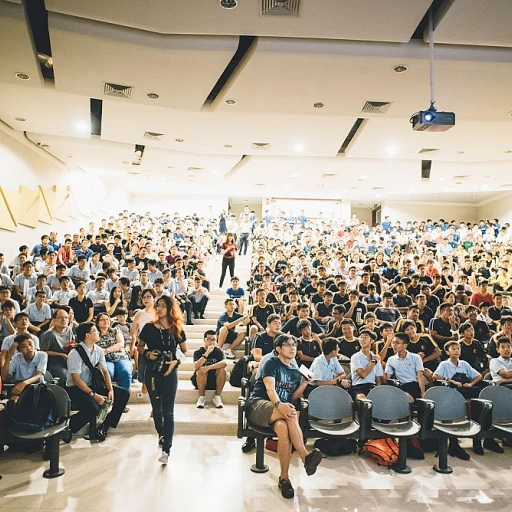
Defining Temp-to-Hire
Delineating the Temp-to-Hire Concept
Temp-to-hire is a strategic employment arrangement where a company initially hires a worker on a temporary basis, with the intention of transitioning them into a permanent position if they fit the required skills and company culture. This type of staffing allows businesses to assess a candidate’s capabilities over a designated temporary period before making a long-term commitment. It serves as an alternative to direct hire, offering flexibility for both employers and job seekers.
During the initial temporary phase, companies provide temporary employees with opportunities to showcase their talents and potential, while employers evaluate if these workers truly suit the permanent role. Such an arrangement helps in assessing temp hire employees' adaptability and work ethics without the immediate obligations tied to permanent employment.
Staffing agencies often play a crucial role in facilitating these arrangements by matching candidates with businesses looking to fill temp positions. These agencies are instrumental in managing the complexities of hiring, especially when operational demands require an accelerated response. Temporary hires allow companies to maintain productivity without the immediate need for a full-time hire. For more insights on how staffing agencies actively support businesses, it would be insightful to explore the role of staffing agencies in addressing staffing needs.
Benefits of Temp-to-Hire for Employers
Employer Advantages of Temp-to-Hire
Incorporating temp-to-hire solutions in MSP staffing offers significant benefits to employers. Not only does this approach ease hiring pressures, but it also allows organizations to evaluate potential employees over a temporary period. This effectively serves as an extended interview process, enabling companies to determine whether the temp worker is a good fit for a permanent position without committing to a direct hire from the outset.
This method is particularly beneficial in rapidly changing industries where skills and requirements often evolve. A temp-to-hire setup gives businesses the flexibility to hire workers with the specific skills they need at any given time. It provides a trial period during which both the company and the temporary employee can assess if the role meets their expectations.
The use of staffing agencies can further streamline the hiring process. These agencies manage everything from sourcing temp hires to handling administrative tasks. This reduces the burden on HR departments, saving time and resources.
Additional benefits temp employers might appreciate include:
- Flexibility: Easily fill positions on a temporary basis as business needs fluctuate.
- Cost-effectiveness: Reduces long-term hiring costs by minimizing turnover.
- Performance evaluation: Offers a chance to observe candidate performance and cultural fit before committing to a full-time permanent role.
By having the capability to transition temporary employees into enduring roles, organizations can create a robust and efficient workforce. For a deeper understanding, consider exploring the dynamics of MSP staffing, which sheds light on how MSP solutions can optimize such hiring strategies.
Advantages for Job Seekers
Unlocking Opportunities for Job Seekers
For those navigating the evolving job market, the idea of a temp-to-hire position presents a unique opportunity. But what exactly does it offer job seekers? Here's a closer look at the advantages for individuals seeking employment through this staffing model.
First and foremost, temp-to-hire roles allow individuals to "test the waters" in a new work environment. This temporary period gives them a chance to assess whether a company, its culture, and the specific position are a good fit for their long-term career aspirations. Job seekers can utilize this time to gain a deeper understanding of a company's work processes, expectations, and team dynamics.
Additionally, with the flexibility of temporary jobs, individuals can accumulate a wider range of experiences and diversify their skills portfolio. This not only enhances their resume but also equips them with qualities that employers seek in potential permanent hires. The temp period acts as a learning phase where job seekers can gain insights into different industries and roles, adding to their versatility.
Furthermore, the prospect of transitioning into a permanent role can be highly motivating. Many companies view temp-to-hire arrangements as a trial phase, allowing them to fill positions with individuals they believe are a perfect match for their organizational needs. During this period, the temporary employee has the potential to demonstrate their skills, work ethic, and suitability for the permanent job, thereby increasing their chances of landing a full-time role.
Working with staffing agencies during this period provides job seekers with access to professional guidance and support. Agencies can offer insights into staffing trends, assist in skill enhancement, and connect job seekers with relevant job openings. This partnership can be particularly beneficial in finding temp-to-hire opportunities that align with career goals.
In essence, temp-to-hire roles can serve as a stepping stone to a stable career, offering a pathway from temporary to permanent employment. For job seekers eager to demonstrate their capabilities and secure a long-term position, this model is a promising avenue worth exploring.
Challenges in Temp-to-Hire Arrangements
Addressing the Common Obstacles in Temp-to-Hire Strategies
When exploring temp-to-hire arrangements, it's essential to recognize that they come with their own set of challenges. Understanding these can help both employers and job seekers navigate the process more effectively. One of the primary issues that companies face is the adjustment period that temporary employees go through. Each temporary employee may require varying amounts of time to get acquainted with their new roles, learn the company culture, and become productive. This acclimatization can extend the productivity timeline, which may not always align with the company’s immediate needs. For permanent employees, seeing a rotating roster of temporary workers might also affect team dynamics and morale. It can sometimes be challenging for full-time employees to engage with temps, knowing they might not stay long term. Companies must foster an environment where both temporary and permanent workers feel valued and integral to the success of the team. Another factor is managing the expectations of both the employer and the temp hire. Employers might sometimes assume that every temp worker will graduate to a permanent position if they perform well. However, this isn’t always possible, as certain positions may not lead to direct hire opportunities due to budget constraints or other organizational strategies. For job seekers, a significant challenge lies in proving that they are a good fit within a somewhat uncertain timeframe. Temp hires need to showcase their skills quickly and effectively, while also clarifying the benefits they bring to the organization during the temporary period. This challenge is compounded by the need to understand precisely what the role entails and how their performance will be evaluated. Lastly, companies need to consider the financial implications of temp-to-hire. While initially a temporary hire can offer cost savings, extended periods without transitioning to a permanent role can lead to excessive short-term staffing costs. Finding the right balance between temporary and permanent staffing solutions is crucial for sustainable growth and achieving long-term organizational goals.Integrating Temp-to-Hire in MSP Staffing Solutions
Leveraging Temp-to-Hire in Managed Staffing Programs
Incorporating temp-to-hire strategies into Managed Service Provider (MSP) staffing solutions can prove beneficial for both employers and job seekers. For companies, hiring temporary workers provides an opportunity to evaluate the skills and work ethic of potential candidates before offering a permanent position. This approach helps ensure a good fit between the employee and the company, reducing the risk of turnover in the long term. Staffing agencies play a crucial role in facilitating this process by sourcing and managing temporary employees during the initial trial period. This not only streamlines the hiring process for companies but also allows staffing agencies to tailor their search to meet specific needs, ensuring that the right candidate is placed in the right role. From the perspective of job seekers, temp-to-hire arrangements offer a chance to demonstrate their capabilities and adapt to the company culture gradually. This period provides valuable experience, making it easier for temporary employees to transition into full time roles if all parties are satisfied with the arrangement. Understanding the pain points and evolving trends within the industry is essential for successful integration. As staffing demands continue to change, the ability to quickly fill open positions with qualified workers remains a top priority for businesses. By utilizing temp-to-hire methods, companies can strike a balance between immediate staffing needs and the search for long term, reliable employees. This makes it an essential component in modern MSP staffing frameworks, ensuring lasting and mutually beneficial employment relationships. By acknowledging these dynamics, businesses and staffing agencies can develop effective strategies to harness the benefits temp positions bring to the table, moving towards hiring solutions that offer both flexibility and stability in an increasingly competitive job market.Future Trends in Temp-to-Hire and MSP Staffing
Innovations and Developments in Temporary Hiring
As companies strive for a balance between agility and stability in the workforce, temporary hiring within MSP staffing is poised to undergo several significant changes.- Technology Integration: Leveraging advanced technologies, including AI and machine learning, MSPs are enhancing their capacity to match temp hires to positions promptly and accurately. This reduces the time it takes to fill temporary job roles and ensures a better alignment of skills, enhancing the benefits for both employers and temp workers.
- Flexible Work Models: As temporary positions increasingly become stepping stones to permanent roles, there is a growing focus on incorporating flexible work models that allow temporary workers to enjoy greater autonomy and better work-life balance. In turn, this flexibility can encourage a more engaged and satisfied temporary employee pool, improving overall productivity.
- Skills Development Focus: Organizations are investing more in training and upskilling temp hires, equipping them with the skills needed for a permanent position. This focus on professional growth benefits the employee’s career trajectory and enhances the company’s ability to retain top talent in permanent roles.
- Diverse Workforce Representation: Efforts towards a more diverse and inclusive workforce are increasingly emphasized in MSP staffing solutions. Temporary workers from varied backgrounds bring unique perspectives and skills, which can be an asset for innovation and creativity within companies.
- Long-term Staffing Strategy: The trend of using temporary hires as a preliminary evaluation period for future full-time employment is expected to grow. This allows employers to effectively manage their staffing needs by ensuring temp employees are a good fit for long-term roles before committing to direct hire decisions.












